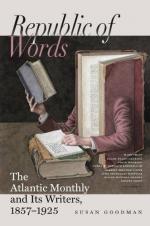The manufacture of cotton in India, with very simple machinery, was early brought to high perfection. Travellers in the ninth century describe muslins in India which were of such fineness that they might be drawn through a ring of moderate size; and Tavernier speaks of turbans, composed of thirty-five ells of the cloth, which would weigh but four ounces. Muslin has been sold in India for five hundred rupees the piece, so fine, that, when laid upon the grass after the dew had fallen, it was no longer visible. The patience, the nice sense of touch, and the flexible fingers of the Hindoos have with the simplest means achieved results in this branch of manufacture which have not been surpassed by any people.
But this manufacture is now breathing its last; the cotton-gin, the spinning-frame, the mule with its countless spindles, and the power-loom are fearful competitors; and although British India still produces quite as much cotton as our Southern States, and while she exports at least eight hundred thousand bales annually to England and China, continues at the same time to make the larger part of her own clothing, flourishing cities, like Dacca and Delhi, once the seat of manufactures, are going to decay, and a large proportion of her people, willing to toil at six cents per day in occupations that have been transmitted for centuries in the same families, are either driven to the culture of the fields or compelled to spin and weave for a pittance the jute which is converted into gunny-cloth.
When India muslins and calicoes were first imported into England, they met with a formidable opposition. They had suddenly become fashionable, and threatened to supersede the long-established woollens; and the nation, in its wisdom, first prohibited the importation of these fabrics, and then subjected them to a duty of sixpence per yard. In France, Amiens, Rouen, and Paris protested against cotton as ruinous to the country. But it has surmounted all these obstacles, is firmly established in both nations, and now its manufacture gives support to one-seventh part of the population of Great Britain, employs there thirty-four millions of spindles, consumes annually two and a half million bales of the raw material, and sends abroad, in addition to thread and yarn, twenty-eight hundred million yards of fabrics, of the aggregate value of two hundred and thirty millions of dollars.
In 1856, Great Britain derived her supply of cotton from the following countries, namely:—
From the United States 71 per cent. " the East Indies 19 " " " Brazil 5 " " " Egypt 4-1/2 " " " the West Indies 1/2 " "
But while her supply from India in the twelve years from 1845 to 1857 increased nearly two hundred per cent, namely, from two hundred thousand to six hundred thousand bales, she has increased her exports of cotton




